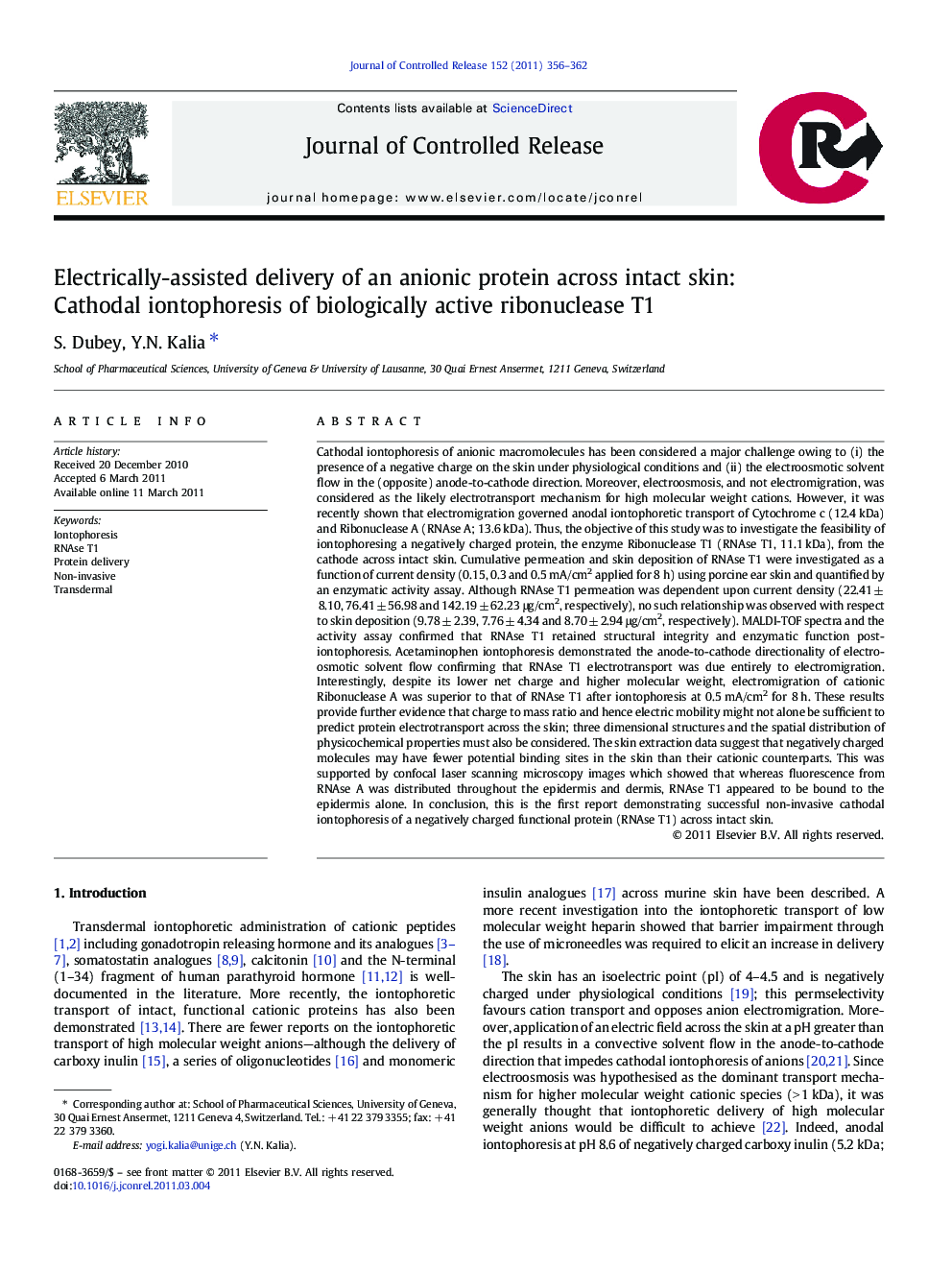| کد مقاله | کد نشریه | سال انتشار | مقاله انگلیسی | نسخه تمام متن |
|---|---|---|---|---|
| 1425057 | 986752 | 2011 | 7 صفحه PDF | دانلود رایگان |

Cathodal iontophoresis of anionic macromolecules has been considered a major challenge owing to (i) the presence of a negative charge on the skin under physiological conditions and (ii) the electroosmotic solvent flow in the (opposite) anode-to-cathode direction. Moreover, electroosmosis, and not electromigration, was considered as the likely electrotransport mechanism for high molecular weight cations. However, it was recently shown that electromigration governed anodal iontophoretic transport of Cytochrome c (12.4 kDa) and Ribonuclease A (RNAse A; 13.6 kDa). Thus, the objective of this study was to investigate the feasibility of iontophoresing a negatively charged protein, the enzyme Ribonuclease T1 (RNAse T1, 11.1 kDa), from the cathode across intact skin. Cumulative permeation and skin deposition of RNAse T1 were investigated as a function of current density (0.15, 0.3 and 0.5 mA/cm2 applied for 8 h) using porcine ear skin and quantified by an enzymatic activity assay. Although RNAse T1 permeation was dependent upon current density (22.41 ± 8.10, 76.41 ± 56.98 and 142.19 ± 62.23 μg/cm2, respectively), no such relationship was observed with respect to skin deposition (9.78 ± 2.39, 7.76 ± 4.34 and 8.70 ± 2.94 μg/cm2, respectively). MALDI-TOF spectra and the activity assay confirmed that RNAse T1 retained structural integrity and enzymatic function post-iontophoresis. Acetaminophen iontophoresis demonstrated the anode-to-cathode directionality of electroosmotic solvent flow confirming that RNAse T1 electrotransport was due entirely to electromigration. Interestingly, despite its lower net charge and higher molecular weight, electromigration of cationic Ribonuclease A was superior to that of RNAse T1 after iontophoresis at 0.5 mA/cm2 for 8 h. These results provide further evidence that charge to mass ratio and hence electric mobility might not alone be sufficient to predict protein electrotransport across the skin; three dimensional structures and the spatial distribution of physicochemical properties must also be considered. The skin extraction data suggest that negatively charged molecules may have fewer potential binding sites in the skin than their cationic counterparts. This was supported by confocal laser scanning microscopy images which showed that whereas fluorescence from RNAse A was distributed throughout the epidermis and dermis, RNAse T1 appeared to be bound to the epidermis alone. In conclusion, this is the first report demonstrating successful non-invasive cathodal iontophoresis of a negatively charged functional protein (RNAse T1) across intact skin.
Graphical AbstractFigure optionsDownload as PowerPoint slide
Journal: Journal of Controlled Release - Volume 152, Issue 3, 30 June 2011, Pages 356–362